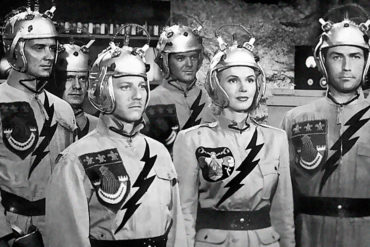I went along with some friends to Millennium Park for a chol hamoed trip. I’d been before, I’m a regular in Chicago by now, but they wanted to see the Cloud Gate (or bean, as it’s colloquially referred to), and I had nothing else to do that day. We walked around for a bit, taking in the fresh air, and the sights. After passing the Cloud Gate, and taking the obligatory pictures both next to and under, we meandered around the park looking for a good patch of grass to sit down, relax, and let their baby play.
It’s been rainy here in Chicago over Sukkos, and much of the ground was muddy, and damp. After traversing what felt like the whole park and finding either mud or cordons blocking entry to the primo lawnspace, we settled for the grassy patch at the entrance to the park, at the Millennium Park Monument. Or rather, they did. The grass was wet, and while they may have felt comfortable walking around slightly damp for the rest of the day, I certainly didn’t. Wasn’t my kid anyway, so I found myself a nearby bench, and sat there until they were ready to leave.
I noticed something strange about the bench, though. It wasn’t even remotely comfortable. Almost intentionally uncomfortable. The seat was rounded, and the back was unreasonably straight, almost as if it was trying to make sitting unpleasant. Seemed weird to me, so I Googled it. One of the first results was an Atlantic article about hostile architecture, and how cities were implementing it in various forms to keep the homeless from becoming a citywide nuisance. Sitting there on that rounded, uncomfortable bench, reading about how city planners specifically round benches, place armrests in the center of each bench, tilt benches forward, forcing anyone sitting in them to brace themselves by putting their feet on the ground, and install spikes on low walls and patches of pavement that homeless people might find slightly hospitable, was jarring. The article even made a point to mention how unnoticed these hostile designs go until you actually need whatever it is they’re deterring.
And it’s true. My town has tilted benches installed in some of its parks, but I never really gave it much thought, because I’ve never needed to be on a bench for any extended amount of time, and the inconvenience posed by having to brace myself in place with my feet for the ten or twenty minutes I’ve sat on those benches never really annoyed me enough to ask why they were tilted. Finally realizing why they were tilted made me angry. Cities should be doing a whole lot more for homeless people than making benches friendly for people who have nowhere else to sleep, they should be at the very least building long term shelters, and affordable housing, increasing funding for job training and placement, opening free treatment centers for people suffering from drug addiction, and making mental health care freely available to people who can’t afford it, but if they’re not going to do any of that, at the very least they should open their benches to people who have nowhere else to rest.
As I was working myself silently into a righteous fury, picking out the words for a Facebook post that would achieve maximum effect, a pillory against the entitled who want to have it both ways: to spend no money on alleviating homelessness and its causes, and also not have to see the people affected by their indifference, my friends wandered over from the grass, and sat down next to me on the bench. I got up and started telling them about what I’d learned about that bench, and hostile architecture in general. We got into a discussion about whether or not hostile architecture was justified, with my friend arguing that arguing over hostile design itself indicates a late-stage problem, because if you’re already at the point where your homeless problem necessitates the implementation of hostile design, you’ve already so fundamentally failed two steps back at creating basic resources for people who are so severely disadvantaged, that hostile architecture is almost beside the point. I was arguing that, while that’s definitely true, and that cities need to do so much more to help their homeless populations, the implementation of hostile design as a deterrent for homelessness bespeaks a kind of particular cruelty that any city with any semblance of a conscience should find abhorrent.
By now we were a few minutes into this argument, and I was finding it increasingly hard to concentrate on what I was trying to say, mainly because, I finally noticed, there was someone on a bench next to me, talking loudly. A woman who appeared to be homeless was talking, and growing increasingly agitated, louder, as she commented to the air in front of her, but really to the two of us arguing, about how we were both idiots, and had no idea what we were talking about.
And that’s when I felt shame like I’ve never felt in my life. Shame at having not noticed her in the first place, shame at having taken so long to notice what she was saying, shame at having mentally patted myself on the back for finally noticing hostile design after reading that article, shame for having the luxury to discuss the issue so cavalierly without really being affected by the outcome.
My friend didn’t seem to notice. She probably couldn’t hear the woman as clearly as I could, seeing as I was standing closer to her than my friend was. I could hear her, and I was ashamed. I made an excuse to walk away, and took a walk for a bit, thinking over what had just happened. When I got back, my friends were walking toward me pushing their stroller, already on the next topic, but I couldn’t get what had just happened out of my head, and I couldn’t shake the shame.
Until we got to the tea shop I’d been looking forward to visiting a few blocks away, and I dropped $5 on a delicious cup of wild strawberry.





